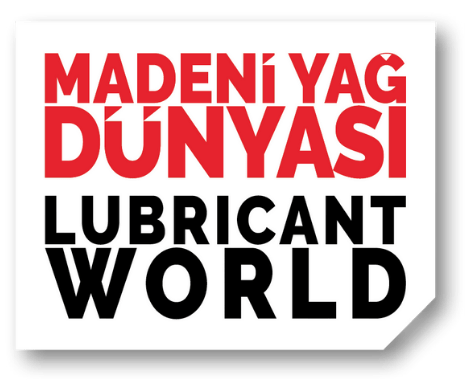Surface or underground storage of lubricating products obtained by reprocessing waste lubricants in recycling facilities creates potential risks for public and environmental health. The most important risks are possible leaks, fires, and explosions.
The resistance of storage tanks to corrosion is approximately 20 years. Without proper precautions, these tanks can develop leaks. In addition to corrosion, improper tank and pipe connections can also cause leaks. Even small leaks, such as one drop per second, can result in approximately 1,600 liters of lubricants being released into the environment per year.
Lubricants are toxic to plants and animals. Just half a liter of oil leakage can create a thin film layer of 4,000 m2 on the surface of the water, which prevents oxygen transfer. As a result, the water environment becomes uninhabitable for plants and animals. If oils pollute groundwater, it becomes very difficult to purify this water to a usable quality.
Lubricant vapors can be irritating to the eyes, skin, and upper respiratory system. Exposure to excessive amounts can lead to headaches, dizziness, and fatigue. Studies have shown that prolonged exposure to lubricants can cause skin cancer and dermatitis. Inhaling lubricant vapors can cause heart palpitations and fever. Swallowing lubricants can result in burning sensations in the mouth and throat, vomiting, and diarrhea. The International Agency for Research on Cancer (IARC) has stated that unrefined or inadequately purified oils are carcinogenic. Therefore, it is extremely important to handle and store lubricants with great care to prevent potential health issues.
Although our country does not have specific standards for the use of tanks to store recovered products, you can refer to standard TSE 3298 “Welded Tanks Used in the Storage of Crude Oil” and standard TSE 4943 “Safety Rules in Tank Farms for the Storage of Crude Oil and Petroleum Products.” In addition to these standards, here are some points to consider during the decision-making phase.
1- Surface Storage Systems
Surface systems used for storing oils recovered from waste oils via recycling must meet the following specifications:
- Tanks, barrels or other containers must be equipped to prevent possible leaks or explosions.
- Containers must be placed in a protective case that meets the below criteria:
- The barriers must be capable of holding 110% of the maximum capacity of the storage tank. If there is more than one storage tank, the barriers must be capable of holding 110% of the largest tank or 25% of the total storage volume, whichever is greater.
- Accident risks must be minimized.
- The floor and walls must be water and oil-proof.
- No valves, pipes, or equipment should penetrate the floor or walls for drainage. If any equipment must pass through the floor or walls, pipe connections must be sealed to prevent oil leakage from the system.
- The auxiliary equipment of the containers must also be placed in a secondary protection case.
- If filling operations are carried out from a point where the tank cannot be seen, tanks must be equipped with overflow prevention control devices.
- When transferring oils to another location;
- Flexible pipes must be compatible with taps or valves, and turn off automatically when not in use.
- Taps or valve covers must not turn on when the flexible pipe is not properly connected.
- Pipes must be kept in a protective cabinet and locked when not in use.

Figure 1. Surface storage tank
2- Underground storage systems
Underground systems used for storing oils recovered from waste oils via recycling must meet the following specifications:
- In fixed tanks placed underground, there must be no mechanical connections to equipment other than inspection covers.
- Tanks must be adequately protected against physical damage.
- Equipment used to detect leaks in tanks should be regularly checked.
- All equipment must undergo leakage testing before initial use. Tests should be repeated at least every 5 years for pipes with mechanical connections and at least every 10 years for other equipment.
- Corrosive materials must be adequately protected against corrosion.
- If filling operations are carried out from a point where the tanks cannot be seen, tanks must be equipped with overflow prevention control devices.
- When transferring oils in the storage tanks to another location;
- Flexible pipes must be compatible with taps or valves and turn off automatically when not in use.
- Taps or valve covers must not turn on when the flexible pipe is not properly connected.
- Pipes must be kept in a protective cabinet and locked when not in use.
3- Mobile systems
Mobile tank systems used for storing oils recovered from waste oils via recycling must meet the following specifications:
- All taps and valves must be able to be turned off when not in use.
- When transferring oils to another location;
- Flexible pipes must be able to be connected to pumps or valves manually and turn off when not in use.
- Pumps or valves must be able to be turned off when not in use.
- Pipes must be compatible with lock valves.
4- Pumps
Pumps used to transfer oils should only be checked by authorized persons. There must be no return valves in the pump feed line. Apart from this, fixed pipes, taps and valves used during oil transfer from the storage tank must:
- Be located in a secondary protective tank.
- Be able to be locked when taps and valves are not in use.
In general, product storages must be placed:
- 10 meters away from water resources,
- 50 meters away from wells or boreholes.
All tanks, pipes, and underground equipment must be made of fiberglass, steel, or other corrosion-resistant materials. Both tanks and pipes must be made of materials that are compatible with the product to be stored.




